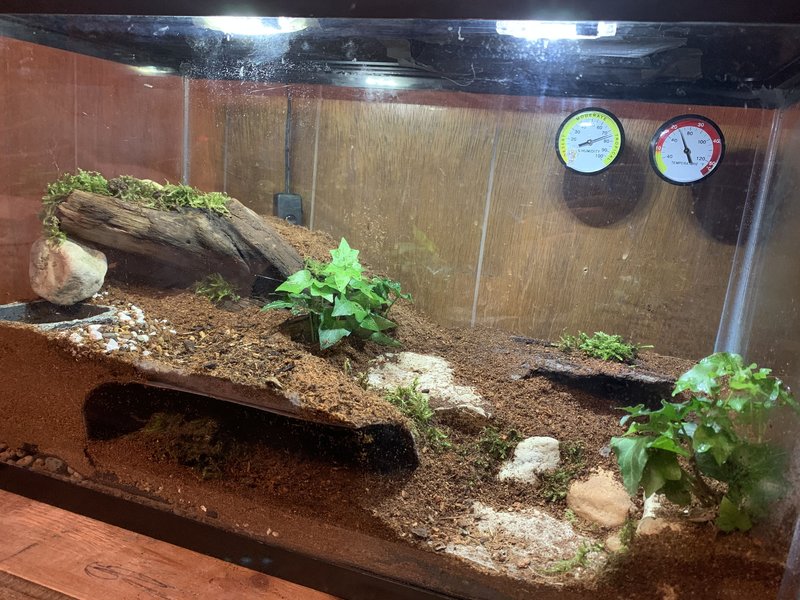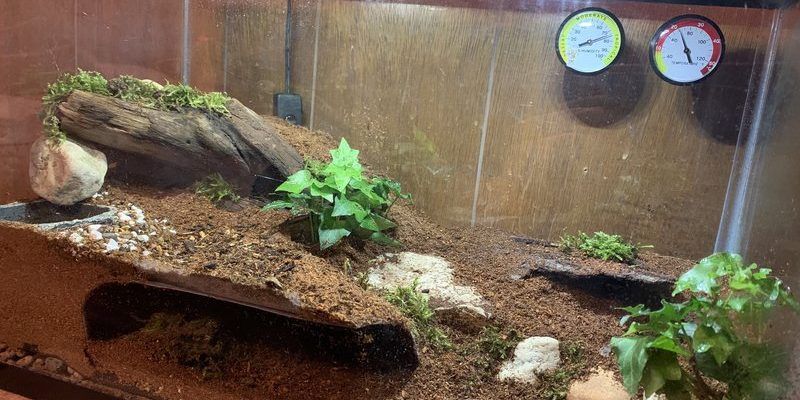
Asian Forest Scorpions are fascinating creatures, known for their stunning appearance and unique behaviors. They thrive in humid, tropical environments, and their enclosure should reflect that. Imagine setting up a mini rainforest right in your living room! With the right materials and a touch of creativity, you can design a space that not only looks great but also meets your scorpion’s needs. So grab a cup of coffee, and let’s dive into how to make your scorpion feel right at home.
Choosing the Right Enclosure
When it comes to selecting the perfect enclosure, size matters. A 10 to 20-gallon tank usually works well for an Asian Forest Scorpion. Why? Because these scorpions can grow quite large—up to 8 inches long! They need enough room to roam and hide. Think of it like giving your scorpion a little apartment that has all the essentials.
You’ll also want to consider the material of the enclosure. Glass tanks are popular because they allow you to see your scorpion while keeping them secure. Make sure the enclosure has a sturdy lid. Scorpions are known for their great escape skills, and you wouldn’t want to lose your new pet after all that setup!
Substrate Selection
Now, let’s talk about what goes at the bottom of the tank. The substrate is crucial for providing both comfort and humidity. A mix of coconut fiber and topsoil is often recommended. Aim for a depth of about 4 to 6 inches, as it allows your scorpion to burrow if they wish. It’s like giving them a little underground room to chill!
Here’s the thing: Proper substrate helps maintain humidity levels, which are vital for your scorpion’s health. You want to keep the substrate moist, but not soaking wet. If you’ve ever tried to find the right balance while baking a cake, you know how tricky it can be! Lightly mist the substrate every few days to maintain that humid vibe without turning it into a swamp.
Temperature and Humidity Control
Creating the right temperature and humidity levels is just as important as choosing the right enclosure. Asian Forest Scorpions thrive in temperatures between 75°F and 85°F. You might be wondering how to achieve that. A simple heat mat or ceramic heat emitter can do the trick, placed on one side of the tank. This way, your scorpion has a warm retreat and a cooler area to explore.
Humidity is equally crucial, ideally around 70-80%. You can monitor this using a hygrometer, which is easy to find at pet shops. Again, think of it as a little weather station for your scorpion’s home! If the humidity drops too low, misting the substrate can help raise it. Just keep an eye on it; you don’t want a soggy environment either.
Decorating the Enclosure
Don’t forget to add some decorations! Scorpions love to hide, so providing them with plenty of hiding spots is essential. You can use items like cork bark, artificial plants, or even rocks to create little caves and nooks. It’s all about making your scorpion feel secure. Imagine how you’d feel if your house had no walls or places to rest!
Be cautious with the decorations. Avoid anything sharp or abrasive that could harm your scorpion. Natural wood pieces are often a great choice—they look nice and provide the right texture. Think of it as furnishing your scorpion’s apartment with both style and safety in mind.
Feeding Your Scorpion
Feeding your Asian Forest Scorpion isn’t as daunting as it may seem. They typically eat crickets, roaches, and other insects. You might think of them as the picky eaters of the scorpion world! When feeding, ensure the prey is appropriately sized—about the same length as your scorpion’s body.
You can feed them about once or twice a week. It’s always a good idea to remove uneaten prey after a few hours. Insects can be sneaky and might stress out your scorpion by hanging around too long. Here’s a tip: you can also sprinkle a little calcium powder on the insects before feeding. It’s like giving your scorpion a nutritious sprinkle of goodness.
Handling Your Scorpion
You might be curious about handling your scorpion. While they may look cool and intriguing, handling should be approached with caution. Scorpions can be skittish, and sudden movements can stress them out. If you want to handle your scorpion, it’s best to do so when they are calm—usually after feeding when they’re less likely to be active.
Use a small container or a critter-catching tool to gently coax your scorpion into it. Honestly, it’s a bit like guiding a cat into a carrier—patience is key! If your scorpion seems agitated or tries to pinch you, just give it some space. Like people, scorpions have their moods and need to feel comfortable in their environment before engaging with you.
Common Mistakes to Avoid
As a beginner, you may face some challenges while setting up the enclosure. One common mistake is neglecting humidity and temperature controls. Remember, these creatures hail from humid tropical environments and need that warmth to thrive. Skipping on lidded enclosures is another mistake. Scorpions are escape artists; a secure lid is your best friend!
Don’t overdo it on decorations either; while hiding spots are essential, overcrowding can make your scorpion feel cornered. Aim for a balance—like a nice minimalist room design. Another misstep is feeding live prey without checking. Always monitor what goes on in the enclosure to promote a safe environment for your scorpion.
Final Thoughts
Setting up the best enclosure for your Asian Forest Scorpion doesn’t have to be overwhelming. With the right tank, substrate, temperature, humidity, and decorations, you’re on your way to creating a cozy, safe home for your new pet. Just remember to keep an eye on their needs and comfort, and you’ll both enjoy the experience!
As you embark on this journey with your scorpion, take your time to learn and adapt. It can be a fascinating experience, resembling the fun of decorating a new space. Each element you choose plays a role in your scorpion’s life, turning their little enclosure into a thriving habitat. Happy scorpion keeping!

